H Nathues
Cost of porcine reproductive and respiratory syndrome virus at individual farm level – An economic disease model
Nathues, H; Alarcon, P; Rushton, J; Jolie, R; Fiebig, K; Jimenez, M; Geurts, V; Nathues, C
Authors
P Alarcon
J Rushton
R Jolie
K Fiebig
M Jimenez
V Geurts
C Nathues
Abstract
Porcine reproductive and respiratory syndrome (PRRS) is reported to be among the diseases with the highest economic impact in modern pig production worldwide. Yet, the economic impact of the disease at farm level is not well understood as, especially in endemically infected pig herds, losses are often not obvious. It is therefore difficult for farmers and veterinarians to appraise whether control measures such as virus elimination or vaccination will be economically beneficial for their farm. Thus, aim of this study was to develop an epidemiological and economic model to determine the costs of PRRS for an individual pig farm. In a production model that simulates farm outputs, depending on farm type, farrowing rhythm or length of suckling period, an epidemiological model was integrated. In this, the impact of PRRS infection on health and productivity was estimated. Financial losses were calculated in a gross margin analysis and a partial budget analysis based on the changes in health and production parameters assumed for different PRRS disease severities. Data on the effects of endemic infection on reproductive performance, morbidity and mortality, daily weight gain, feed efficiency and treatment costs were obtained from literature and expert opinion. Nine different disease scenarios were calculated, in which a farrow-to-finish farm (1000 sows) was slightly, moderately or severely affected by PRRS, based on changes in health and production parameters, and either in breeding, in nursery and fattening or in all three stages together. Annual losses ranged from a median of € 75′724 (90% confidence interval (C.I.): € 78′885–€ 122′946), if the farm was slightly affected in nursery and fattening, to a median of € 650′090 (90% C.I. € 603′585–€ 698′379), if the farm was severely affected in all stages. Overall losses were slightly higher if breeding was affected than if nursery and fattening were affected. In a herd moderately affected in all stages, median losses in breeding were € 46′021 and € 422′387 in fattening, whereas costs were € 25′435 lower in nursery, compared with a PRRSV-negative farm. The model is a valuable decision-support tool for farmers and veterinarians if a farm is proven to be affected by PRRS (confirmed by laboratory diagnosis). The output can help to understand the need for interventions in case of significant impact on the profitability of their enterprise. The model can support veterinarians in their communication to farmers in cases where costly disease control measures are justified.
Citation
Nathues, H., Alarcon, P., Rushton, J., Jolie, R., Fiebig, K., Jimenez, M., Geurts, V., & Nathues, C. (2018). Cost of porcine reproductive and respiratory syndrome virus at individual farm level – An economic disease model. Preventive Veterinary Medicine, 142, 16-29. https://doi.org/10.1016/j.prevetmed.2017.04.006
| Journal Article Type | Article |
|---|---|
| Acceptance Date | Apr 22, 2018 |
| Publication Date | Apr 27, 2018 |
| Deposit Date | May 15, 2018 |
| Publicly Available Date | May 15, 2018 |
| Journal | Preventive Veterinary Medicine |
| Print ISSN | 0167-5877 |
| Publisher | Elsevier |
| Peer Reviewed | Peer Reviewed |
| Volume | 142 |
| Pages | 16-29 |
| DOI | https://doi.org/10.1016/j.prevetmed.2017.04.006 |
| Public URL | https://rvc-repository.worktribe.com/output/1387455 |
Files
11364.pdf
(2.4 Mb)
PDF
You might also like
Determinants of Thoroughbred yearling sales price in the UK
(2024)
Journal Article
Assessing antibiotic usage data capture accuracy on dairy farms in England and Wales
(2023)
Journal Article
Understanding household and food system determinants of chicken and egg consumption in India
(2023)
Journal Article
Classical BSE in Great Britain: Review of its epidemic, risk factors, policy and impact
(2023)
Journal Article
Downloadable Citations
About RVC Repository
Administrator e-mail: publicationsrepos@rvc.ac.uk
This application uses the following open-source libraries:
SheetJS Community Edition
Apache License Version 2.0 (http://www.apache.org/licenses/)
PDF.js
Apache License Version 2.0 (http://www.apache.org/licenses/)
Font Awesome
SIL OFL 1.1 (http://scripts.sil.org/OFL)
MIT License (http://opensource.org/licenses/mit-license.html)
CC BY 3.0 ( http://creativecommons.org/licenses/by/3.0/)
Powered by Worktribe © 2025
Advanced Search
